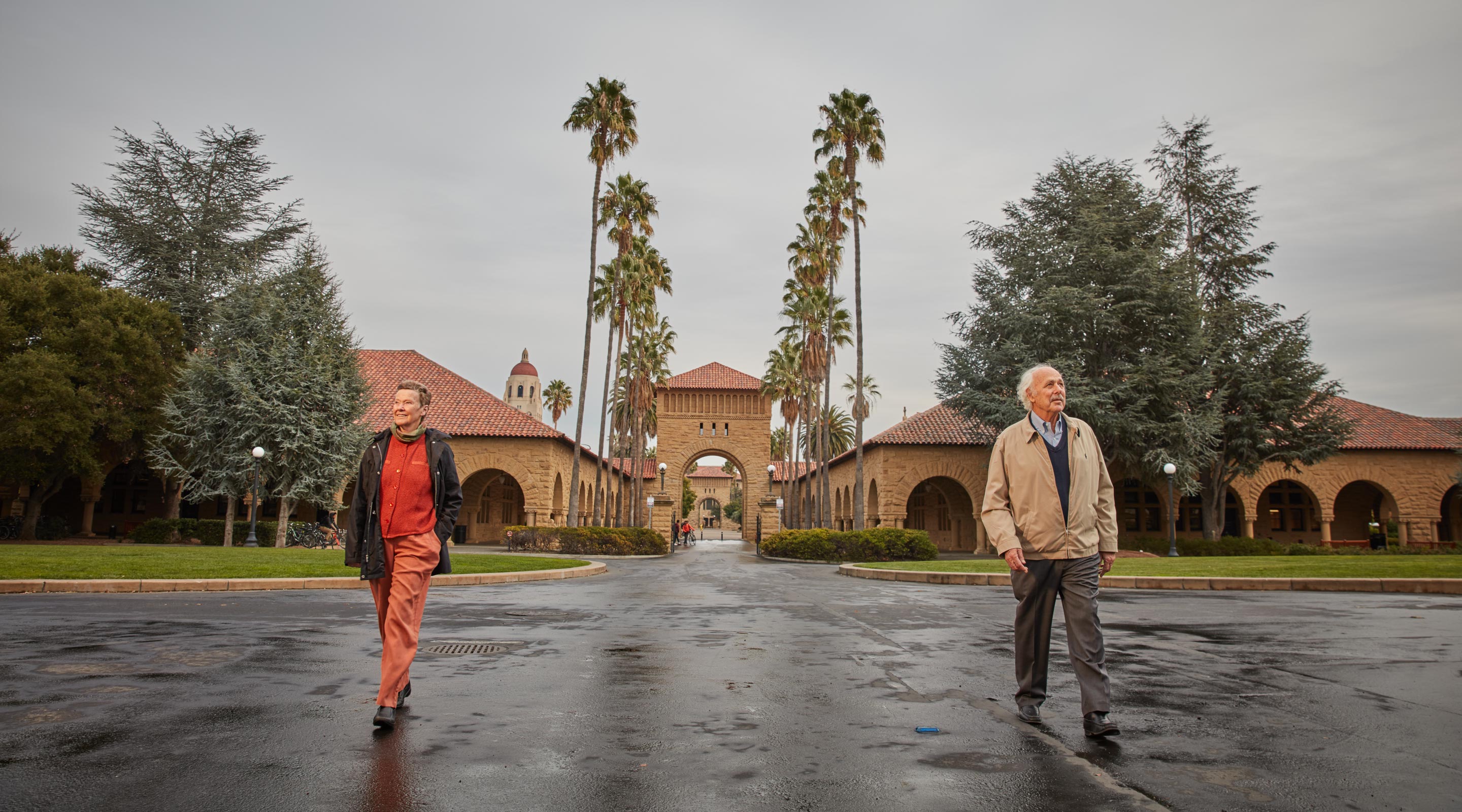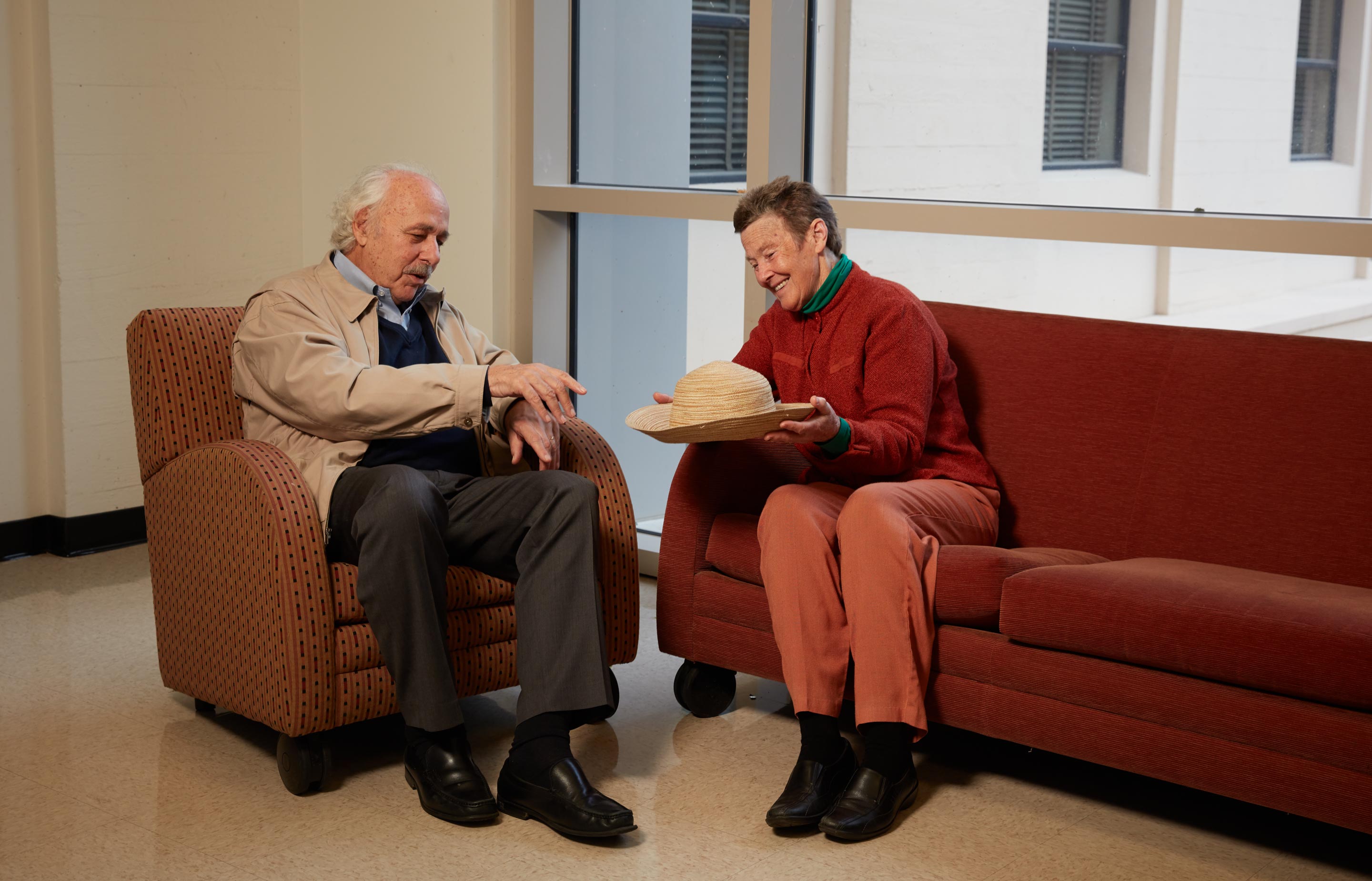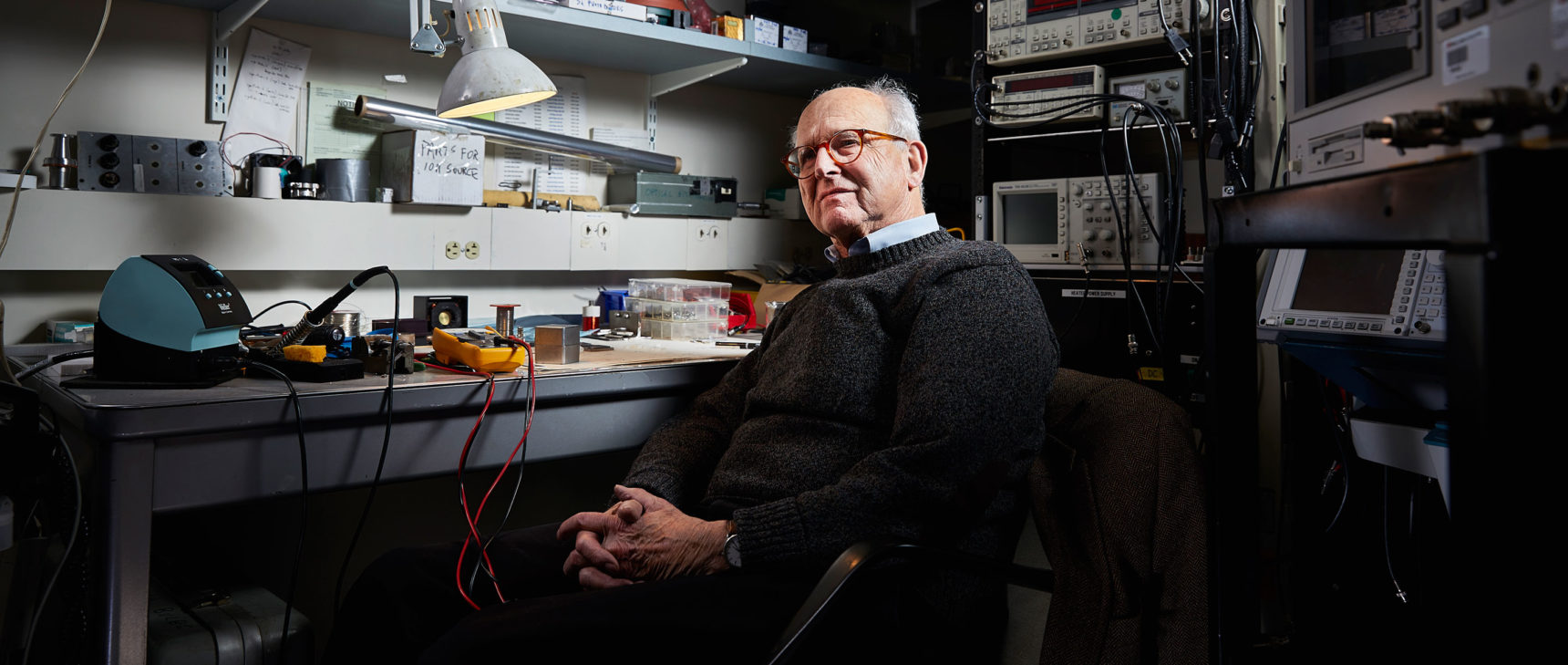
Helen Quinn and Roberto Peccei walking toward Stanford University’s new science and engineering quad. Behind them is the main quad, the oldest part of the campus. “If you look at a campus map,” said Quinn, who along with Peccei proposed Peccei-Quinn symmetry, “you will see the axis that goes through the middle of both quadrangle areas. We are on that line between the two.”
Ryan Schude for Quanta Magazine
Introduction
Four decades ago, Helen Quinn and Roberto Peccei took on one of the great problems in theoretical particle physics: the strong charge-parity (CP) problem. Why does the symmetry between matter and antimatter break in weak interactions, which are responsible for nuclear decay, but not in strong interactions, which hold matter together?
“The academic year 1976-77 was particularly exciting for me because Helen Quinn and Steven Weinberg were visiting the Stanford department of physics,” Peccei told Quanta in an email. “Helen and I had similar interests and we soon started working together.”
Encouraged by Weinberg, who would go on to win a Nobel Prize in physics in 1979 for his work on the unification of electroweak interactions, Quinn and Peccei zeroed in on a CP-violating interaction whose strength can be characterized by an angular variable, theta. They knew theta had to be small, but no one had an elegant mechanism for explaining its smallness.
“Steve liked to discuss physics over lunch, and Helen and I often joined him,” Peccei said. “Steve invariably brought up the theta problem in our lunch discussions, urging us to find a natural solution for why it was so small.”
Quinn said by email that she and Peccei knew two things: The problem goes away if any quarks have zero mass (which seems to make theta irrelevant), and “in the very early hot universe all the quarks have zero mass.” They wondered how it could be that “theta is irrelevant in the early universe but matters once it cools enough that the quarks get their masses?”
They proceeded to draft a “completely wrong paper based on conclusions we drew from this set of facts,” Quinn said. They went to Weinberg, whose comments helped clarify their thinking and, she said, “put us on the right track.”
They realized they could naturally arrive at a zero value for theta by requiring a new symmetry, now known as the Peccei-Quinn mechanism. Besides being one of the popular proposed solutions to the strong CP problem, Peccei-Quinn symmetry also predicts the existence of a hypothetical “axion” particle, which has become a mainstay in theories of supersymmetry and cosmic inflation and has been proposed as a candidate for dark matter.

Peccei and Quinn discussing their proposed symmetry with the aid of a sombrero.
Ryan Schude for Quanta Magazine
That year at Stanford, Quinn and Peccei regularly interacted with the theory group at the Stanford Linear Accelerator Center (SLAC) as well as with another group from the University of California, Santa Cruz. “We formed a large and active group of theorists, which created a wonderful atmosphere of open discussion and collaboration,” Quinn said, adding that she recalls “riding with Roberto back and forth from Stanford to SLAC in his yellow and clunky Jeep, talking physics ideas as we went.”



